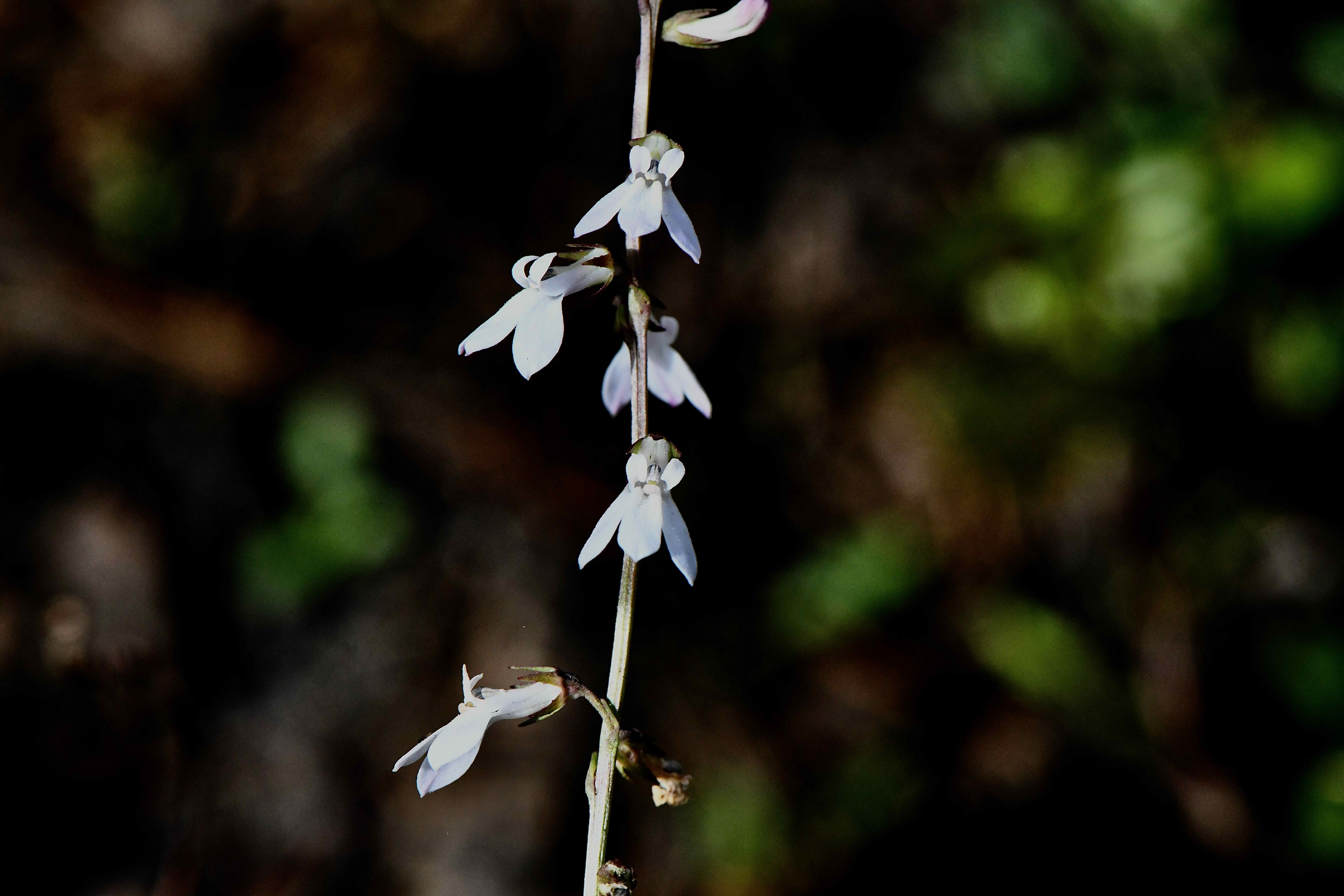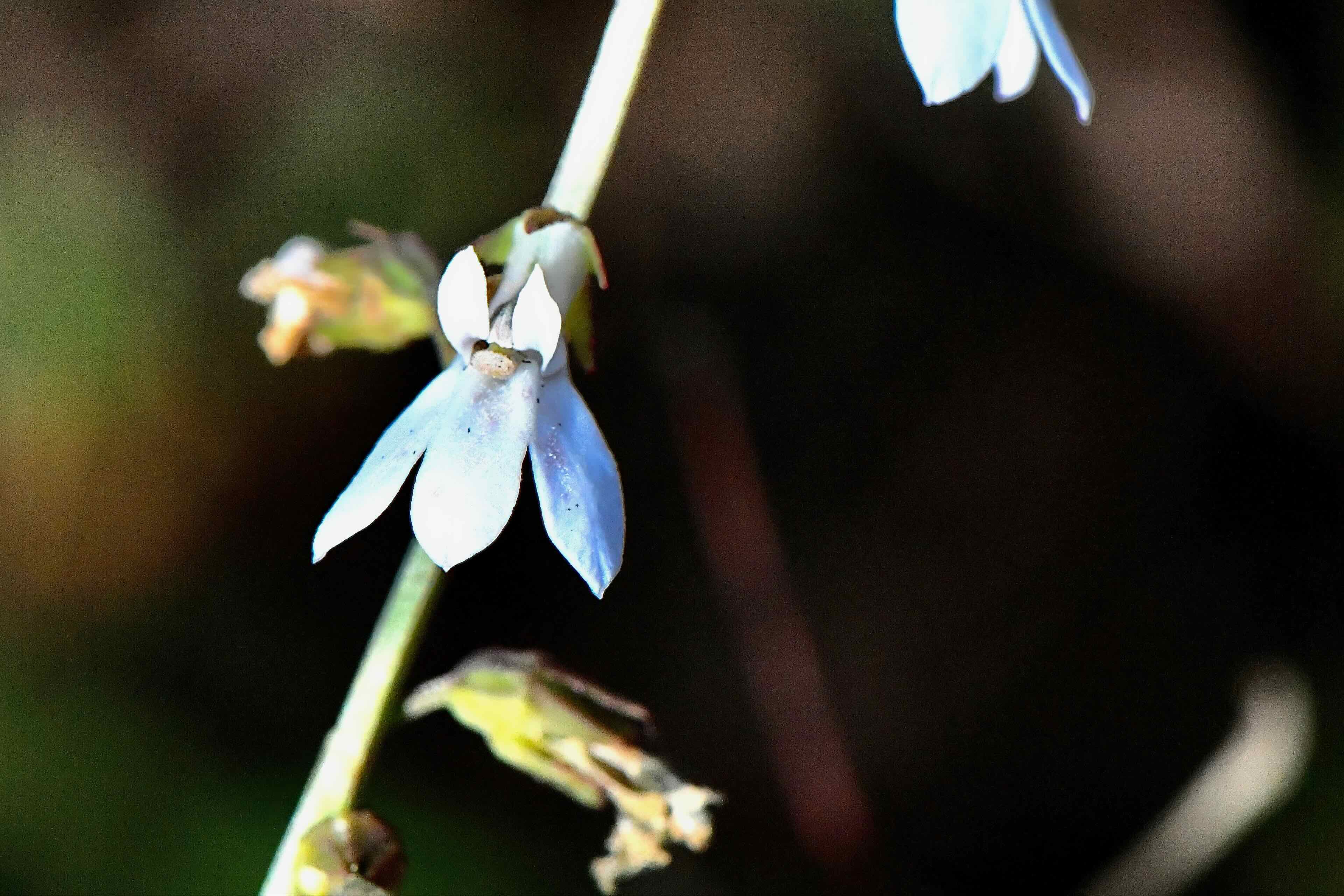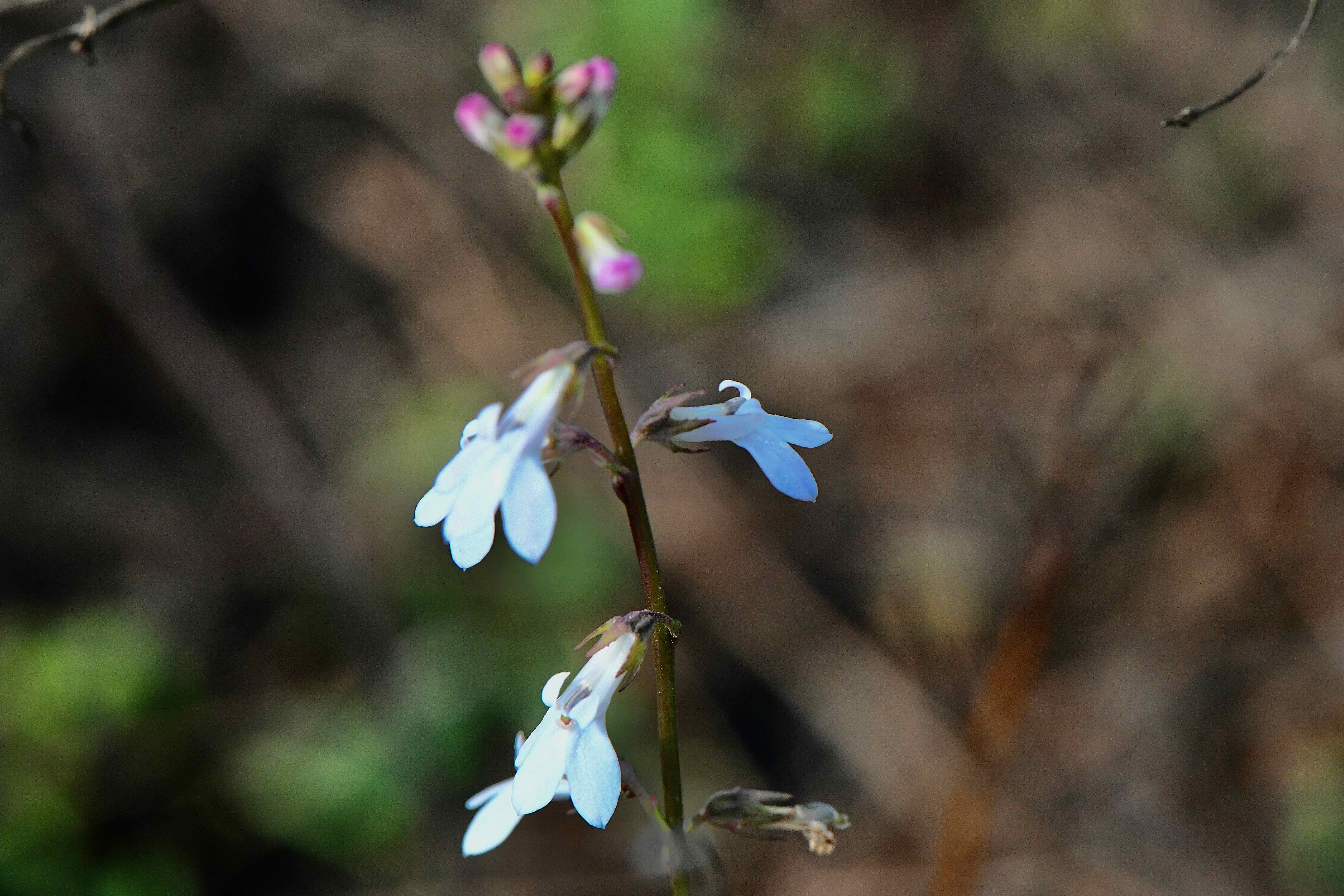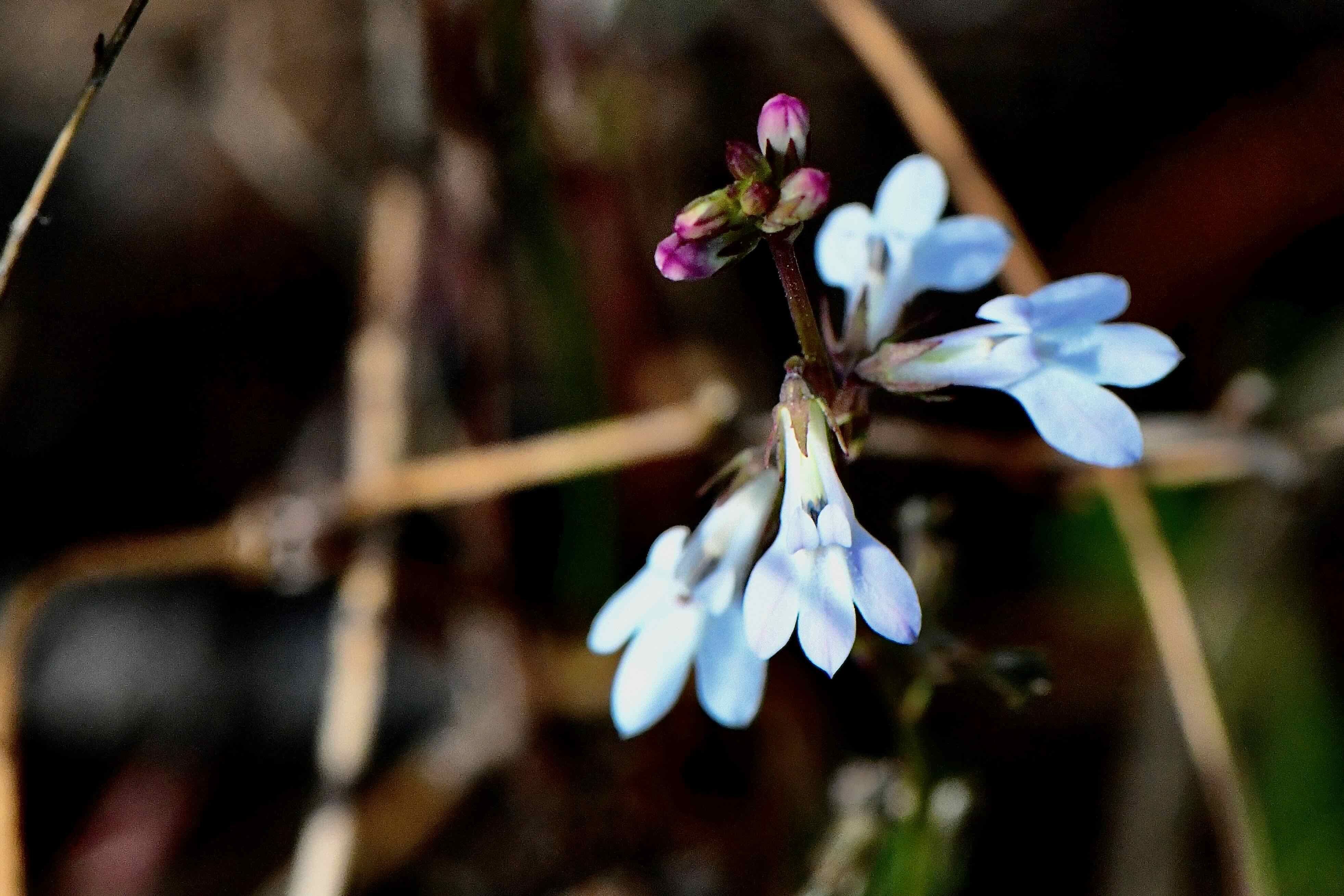
White lobelia, photographed at Loxahatchee Slough Natural Area, Palm Beach Gardens, Palm Beach County, in February 2025.
Wander the wetlands of South Florida and you might come across this unassuming little wildflower, white lobelia, Lobelia paludosa.
It has a familiar look to it, so familiar that the first time you come across it, you might think you’ve seen it before. But look at it again and you begin to see that it’s something different. And you’d be right.
That was what went through our mind, at least, the first time we saw white lobelia while hiking one of our favorite spots. The flowers are similar in shape to one of its cousins, glade lobelia, but the petals are predominantly white with a slight blue-violet tinge to them. Just enough blue to create a little doubt in our mind as to what you’re looking at. Could it be a morph of glade lobelia, with its deep blue flowers?
Nope. White lobelia.
The thing is while glade lobelia is fairly common, white lobelia is fairly rare, at least in our end of the Peninsula. Rare enough that the Institute for Regional Conservation considers it imperiled within South Florida.
It is a Florida native, found throughout most of the Sunshine State from the Panhandle southward but not Broward or Monroe counties. White lobelia is also found in two counties in southeastern Georgia and Alabama. (The Alabama listing appears to be doubtful, however.)
In any regard, white lobelia is an upright plant that stands between one and two feet, with basal leaves that are oval to lance-shaped, two to six inches long. They are simple, arranged alternately along the stem, with margins, or edges, that are either smooth or serrated. The stem has few, if any leaves.
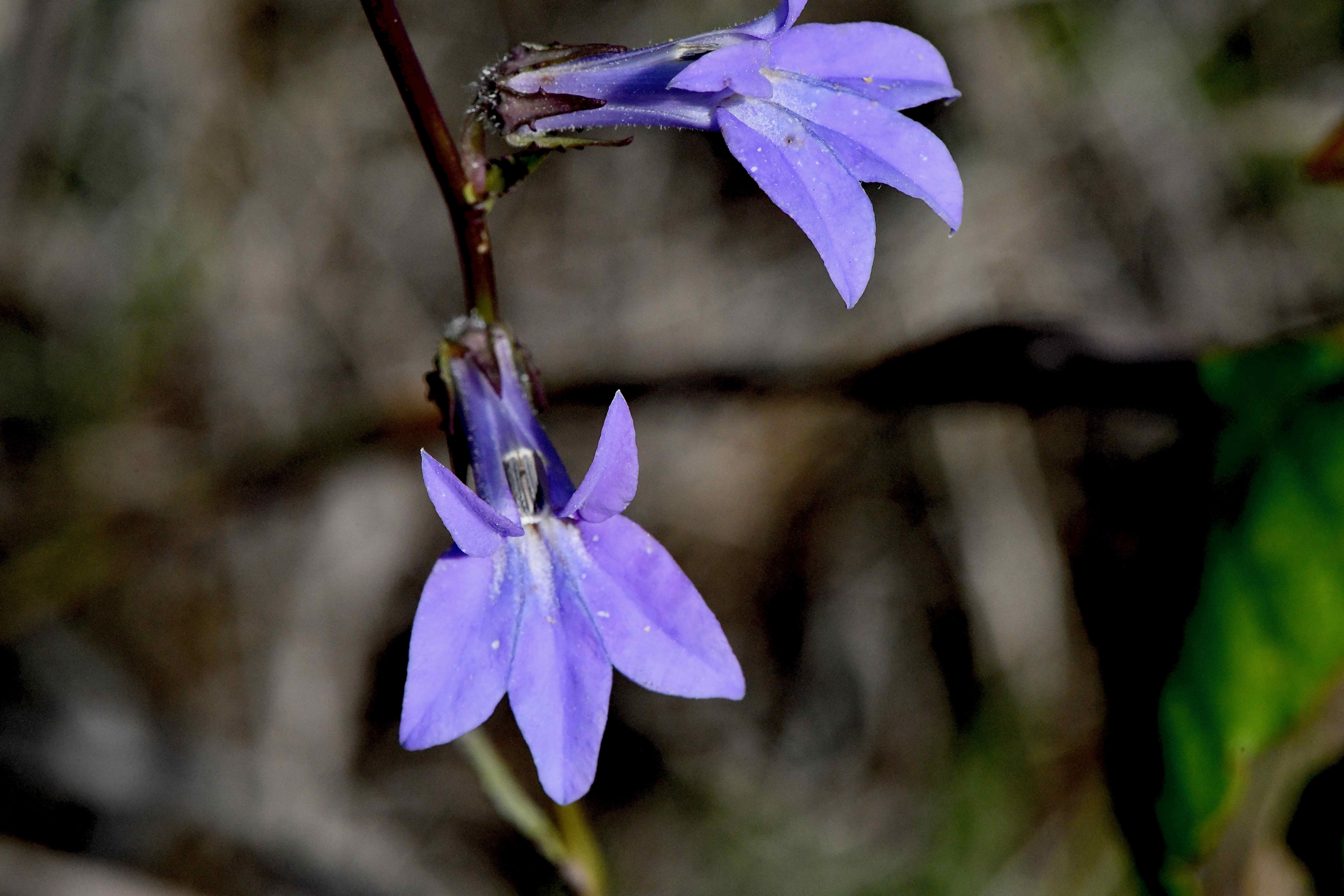
Glade lobelia and its blue flowers for comparison. We took this photo on the same day and the same place as the white lobelia seen on this page.
White lobelia’s flowers have five rabbit-ear-like petals, two of which are fused together at the top, the other three fused together at the bottom. They are white, with a bit of violet running through. The corolla is also fused, forming a tube. In northern parts of its range, white lobelia blooms spring into summer. In more southerly areas, it can bloom year round.
It takes to wet pinelands, places with moist to wet soils that offer few nutrients. White lobelia also likes full sun. It has low tolerances for drought and salt.
White lobelia is cultivated, but few, if any, nurseries offer it for sale.
Other members of the lobelia have been used medicinally in Native American cultures, particularly L cardinalis. Our guy, apparently not at all. Or at least we couldn’t find any records of it being used.
The lobelia name honors 17th-18th century Flemish doctor and botanist Mathias de Lobel, who also wrote an important botany textbook. There are as many as four members of the genera found in South Florida, according to the Institute for Regional Conservation, though one might be extirpated, or locally extinct.
Paludosa is from the latin, paludogus, meaning boggy or swampy.
Glade lobelia is a member of Campanulaceae, the bellflower family.
Loxahatchee Slough Natural Area

